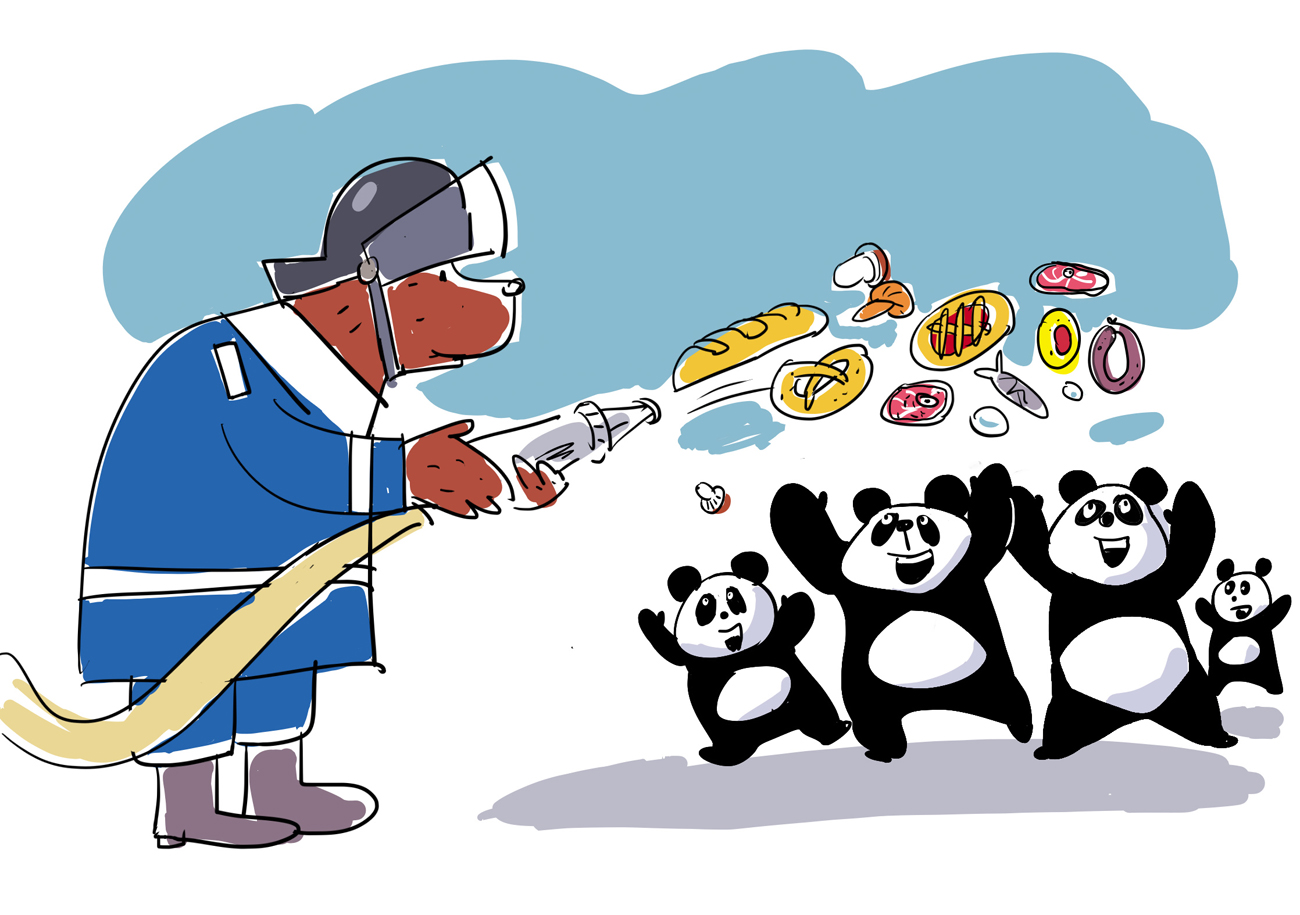
Drawing by Iorsh
Until the mid-1980s, the Soviet Union was among the world leaders in the production of wheat, rye, sugar beet, potatoes, milk and livestock. Russia’s agricultural industry then went into the doldrums and took over two and a half decades to recover.
It received a major boost in 2014 when Russia introduced sanctions on food products from the West, and initiated an import substitution-focused policy.The price competitiveness of Russian agricultural products has primarily increased over the last two years due to the sharp devaluation of the ruble.
Bumper harvests in the last two years have led to a surplus of agricultural produce in Russia and an opportunity to increase large-scale exports to China, the world’s largest consumer of food.
In 2015, the country's population consumed 120 million tons of wheat (almost as much as the European Union), 150 million tons of rice (a third of global consumption), and 57 million tons of pork (first place).
Simultaneously, as the population in China is growing, the total arable land is decreasing, while, according to unofficial data, the level of urbanization has reached 55 percent.
As the demand for agricultural products is expanding, the country's production capacity is declining. China's leadership, realizing that this situation calls into question the food security of the country, announced at the end of 2015 that as part of the 13th Five-Year Plan (2016-2020) the country would rely more on food imports. Medium and long-term export prospects look very bright for Russian agricultural producers.
At the same time, the ongoing cooperation is not free from problems. The first hurdle that came in the way of Russian agricultural producers was the bureaucratic procedure in China to attain phytosanitary certification.
Chinese regulators are very cautious about allowing foreign businesses access to their agricultural market. The negotiations on the admission of Russian meat to China's market took more than a year.Russian meat products will most likely enter the Chinese market by the end of 2016. The Russian regions bordering China, especially in the Far East will have a comparative advantage in the export of agricultural products to China. In turn, the development of infrastructure of the Russian Far East will only spur the development of the agricultural sector.
The institutional framework for this trend is already being formed. The recently established Russian-Chinese Agricultural Development Fund aims to develop agricultural infrastructure projects in the Amur Region, the Jewish Autonomous Region, and Primorye Territory. The fund plans to invest 200 billion rubles ($3 billion) in these regions that are in the Far East.
Russian agricultural products can compete most effectively in certain unoccupied niches of the Chinese market. In dollar terms, average wages are already higher in China than in Russia. Simultaneously, the growing middle class has begun to demand higher-quality foods.
However, Chinese manufacturers often sacrifice the quality of manufactured food products for the sake of higher levels of productivity. Chinese consumers tend to consider Russian foods as environmentally friendly products grown on the vast expanses of their “northern neighbor.”
The niche market of ecologically friendly products has not yet been tapped by local manufacturers. So, despite all the complexities at the moment, the medium and long-term prospects for Russian agricultural exports look very bright. It is no coincidence that in the first half of 2016, China became the largest importer of Russian agricultural products.
Oleg Remyga is Head of China Studies in Moscow School of Management SKOLKOVO
All rights reserved by Rossiyskaya Gazeta.
Subscribe
to our newsletter!
Get the week's best stories straight to your inbox